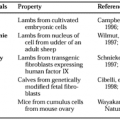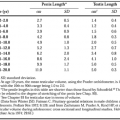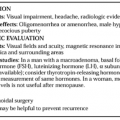USE OF BIOCHEMICAL MARKERS OF BONE TURNOVER IN OSTEOPOROSIS
Part of “CHAPTER 56 – MARKERS OF BONE METABOLISM“
Since the previous edition of this textbook, major advances have been made with regard to the application of biomarkers of bone turnover in osteoporosis. In particular, a number of studies have shown that bone turnover, as assessed by markers of bone formation or of bone resorption, are predictive of future bone loss and fracture risk. Thus, individuals with high rates of bone turnover have been shown to lose bone at a much faster rate than subjects with normal or low bone turnover52,53 (Fig. 56-8). Furthermore, vertebral fracture rates seem to increase as a direct
function of either increased bone turnover or decreased vertebral bone mineral density (BMD).54 A prospective, population-based study of elderly women (older than 75 years) demonstrated that an increase in the urinary excretion of total or free DPD was associated with an increased risk of hip fracture.55 Later analyses of data from the same study revealed that low serum intact OC levels were also associated with an increased risk of hip fracture. Similar results have been reported for the urinary telopeptide markers (β-CTx).56 Importantly, not only were the relative risks similar (as defined by either BMD or marker measurements), but also the combined measurement of hip bone density and of bone markers predicted future hip fractures better than the determination of either bone density or markers alone. This means that in older postmenopausal women, the statistical risk of future hip fracture is highest in subjects with a combination of low bone mass and high rates of bone turnover.
function of either increased bone turnover or decreased vertebral bone mineral density (BMD).54 A prospective, population-based study of elderly women (older than 75 years) demonstrated that an increase in the urinary excretion of total or free DPD was associated with an increased risk of hip fracture.55 Later analyses of data from the same study revealed that low serum intact OC levels were also associated with an increased risk of hip fracture. Similar results have been reported for the urinary telopeptide markers (β-CTx).56 Importantly, not only were the relative risks similar (as defined by either BMD or marker measurements), but also the combined measurement of hip bone density and of bone markers predicted future hip fractures better than the determination of either bone density or markers alone. This means that in older postmenopausal women, the statistical risk of future hip fracture is highest in subjects with a combination of low bone mass and high rates of bone turnover.
Stay updated, free articles. Join our Telegram channel

Full access? Get Clinical Tree






